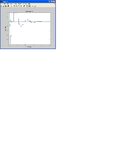SouthPark
Newbie level 6
Hi all! I have a really simple question about understanding matlab plots of a simple step response in discrete-time.
I have a very short matlab (.m file) script that I have attached, where I defined a simple transfer function in the z-domain. A function of 'z'.
And then I just use matlab to plot two STEP responses based on the same transfer function. One response is for sampling period of 1 second, while the other response is for sampling period of 0.1 second.
I was assuming that the two responses would just be super-imposed over each other in the time domain, as I figured that a faster sampling time would simply provide a 'smoother' curve - especially since a smaller sampling period should mean faster sampling rate - and thus a smoother curve.
However, my matlab plots suggest that a faster sampling rate leads to a FASTER response time. I was thinking that a faster sampling rate shouldn't really lead to a faster response time, right? In my matlab plots, it just appears that increasing the sampling rate by a factor of 10 is causing the step response to get quicker (relative to the other plot) by a factor of 10. This doesn't make sense to me, so I thought I'd just ask about this.
Any help is greatly appreciated. Thanks in advance!!
I have a very short matlab (.m file) script that I have attached, where I defined a simple transfer function in the z-domain. A function of 'z'.
And then I just use matlab to plot two STEP responses based on the same transfer function. One response is for sampling period of 1 second, while the other response is for sampling period of 0.1 second.
I was assuming that the two responses would just be super-imposed over each other in the time domain, as I figured that a faster sampling time would simply provide a 'smoother' curve - especially since a smaller sampling period should mean faster sampling rate - and thus a smoother curve.
However, my matlab plots suggest that a faster sampling rate leads to a FASTER response time. I was thinking that a faster sampling rate shouldn't really lead to a faster response time, right? In my matlab plots, it just appears that increasing the sampling rate by a factor of 10 is causing the step response to get quicker (relative to the other plot) by a factor of 10. This doesn't make sense to me, so I thought I'd just ask about this.
Any help is greatly appreciated. Thanks in advance!!
